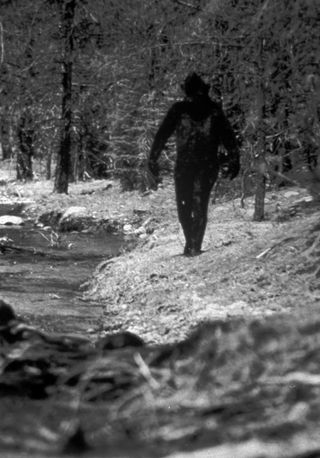Bigfoot Cousins Claimed in Many Countries

A group of Chinese researchers has announced that they are mounting an expedition to seek evidence of the yeren, the Chinese version of Bigfoot. There have been other searches for the yeren in decades past, all failing to find conclusive evidence of its existence. The team, led by a man named Luo Baosheng, is hoping to raise $1.5 million to launch the search.
While Bigfoot is by far the best-known of mysterious bipedal creatures said to inhabit the world's wilds, it is far from the only one. Many countries and cultures have stories of hairy, feral man-like creatures.
Canada's Sasquatch
The Canadian Sasquatch is essentially the same creature as the American Bigfoot, though it is claimed to be primarily nocturnal and a fast runner. Some say it steals food and abducts women — and men: A logger named Albert Ostman claimed that in 1924 while camping in British Columbia he was kidnapped by a Bigfoot family and held for nearly a week. Ostman suspected that he had been captured as a potential breeding mate for the young female Sasquatch of the family, but before he could do the dirty deed he escaped when the male elder choked on Ostman's snuff tobacco. Needless to say, Ostman offered no evidence of his experience.
Nepal's Yeti
The Yeti, formerly known as the Abominable Snowman, is said to live in the forest below the Himalaya Mountains' snow line, though its tracks are occasionally found in snow. It is said to be muscular, covered with dark grayish or reddish-brown hair, and weigh between 200 and 400 pounds (90 to 180 kilograms). The Yeti is relatively short compared with Bigfoot, averaging about 6 feet (1.8 meters) in height. Sir Edmund Hillary, the first man to scale Everest, found no evidence of the creature. Mountaineer Reinhold Messner, who spent months in Nepal and Tibet researching the Yeti found that large native bears were mistaken for Yeti sightings and tracks. The Yeti made news in 2007 when Josh Gates, host of the TV series "Destination Truth," claimed that he found large, mysterious footprints that might be from the Yeti. Despite extensive media publicity nothing more was learned about the tracks; they are now on display at Disney World.
Australia's Yowie
Sign up for the Live Science daily newsletter now
Get the world’s most fascinating discoveries delivered straight to your inbox.
Yowie, the wildman from Down Under, reportedly stands anywhere from 5 to 11 feet (1.5 to 3.4 meters) tall, and has yellow or red eyes deeply set inside a dome-shaped head. Yowies are said to have tan, black, gray, or white hair covering black skin, with arms so long they nearly reach the ground. According to George Eberhart's encyclopedia "Mysterious Creatures" (ABC-CLIO, 2002), the name Yowie comes from the Aboriginal word "yuwi," which means "dream spirit."
Indonesia's Orang Pendek
According to "The Field Guide to Bigfoot, Yeti, and Other Mystery Primates Worldwide" (Avon Books, 1999), "The natives of Sumatra have long believed in the orang-pendek, which means 'little man.' The orang-pendek seems to have a large pot belly and may be dark gray, dark black, yellow, or tan in color." It is also said to have very long head hair, and stand anywhere from 2.5 to 5 feet (0.8 to 1.5 m) tall. One of the first alleged sightings of the orang pendek occurred in 1923, when a Dutch settler in Sumatra saw one in a tree; though he was armed he refused to shoot it, because it resembled a human.
Though most of these creatures share similar features, there is more variation within the types than between them. The other thing they all have in common is a lack of hard evidence for their existence. Perhaps the new Chinese expedition for the yeren will yield real results, but if history is any guide the search will likely be both difficult and fruitless.
- Rumor or Reality: The Creatures of Cryptozoology
- The Surprising Realities of Mythical Creatures
- Top 10 Beasts and Dragons: How Reality Made Myth
- The most famous Bigfoot sightings
Benjamin Radford is managing editor of Skeptical Inquirer science magazine and author of two books about mysterious creatures: lake monsters and el chupacabra (out in March). His Web site is www.RadfordBooks.com.

Most Popular

